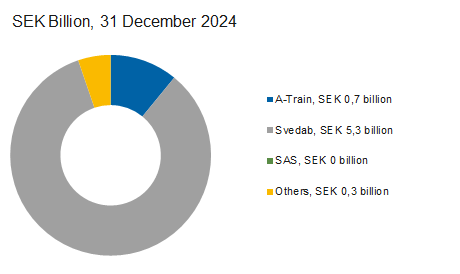At riksgalden.se, we use cookies to improve your experience on our website and to collect statistics. We also use cookies for analyzing to improve our website. More about cookies.
The Debt Office’s lending
The Debt Office primarily provides loans for infrastructure projects following decisions by the Riksdag and the Government. Loans may also be furnished for other activities considered essential or which are intended to mitigate an economic crisis.
Situations sometimes arise in which banks and other financial institutions are, for various reasons, unwilling to lend money to activities that the Riksdag and the Government consider fulfil an important public interest. These may be major infrastructure projects or other investments of importance to society. In such cases, the Riksdag and the Government can commission the Debt Office to provide a loan. This is done following a thorough analysis and on a commercially sound basis.
Lending, domestic and foreign

